
All mushrooms have a function, whether as food, medicine, or serving the Earth’s ecosystems. So in a practical sense, all mushrooms are functional. However, the phrase “functional mushroom” when thinking about them for human uses is for mushroom varieties with therapeutic benefits beyond their nutritional value.
Since the launch of our popular Dynamic Mushrooms™ blend, we realized there’s a lot of confusion surrounding functional mushrooms (also referred to as medicinal mushrooms) and mushrooms in general.
Common questions:
• How are functional mushrooms different from the button grocery store variety?
• Where do they come from?
• What benefits can they provide for my body and mind?
This guide looks at the variety and history of functional mushrooms, their unique qualities, and the health benefits you can expect by including them in your daily routine.

History of Functional Mushrooms
From North America through Europe and Africa to Asia for thousands of years, our ancestors have used specific mushrooms for medicine.
A few examples throughout time include:
• Ancient Egyptians believed eating mushrooms led to a longer life.
• Around 450 BCE, the Greek physician Hippocrates understood that mushrooms have a potent anti-inflammatory ability.
• Native Americans applied ground-up mushrooms to wounds so they would heal more quickly and without infection
• From the 5th century, the alchemist Tao Hongjing touted the therapeutic benefits of the Reishi mushroom.
Although diverse cultures have long used mushrooms, only recently have we rediscovered what the ancients knew long ago – that certain types of mushrooms offer powerful therapy. Scientists and health experts are increasingly looking to functional mushrooms as a way to enhance human health and well-being.
Today, more than a hundred species are under research for their potential health benefits.
Benefits of Functional Mushrooms

Functional mushrooms are species studied for their unique health benefits and ones that have therapeutic uses. The most well-known functional mushrooms include Lion’s Mane, Reishi, Cordyceps, Chaga, Maitake, and Shiitake. Some of these mushrooms have been used for as long as 5,000 years and continue to be central in Asian medicinal practices.
Functional mushrooms have historically been used to:
• Increase energy (1)
• Reduce fatigue (2)
• Boost cognitive function and memory (3)
• Limit stress (4)
• Strengthen immunity (5)
Numerous studies have demonstrated the validity of functional mushrooms for these uses. And the list of potential new benefits of functional mushrooms gets increasingly impressive.
So far, new research shows that functional mushrooms may also help:
• Promote better physical endurance (6)
• Protect cells from oxidative stress (7)
• Lower the risk of heart disease by reducing cholesterol and blood pressure (8)
• Reduce depression and anxiety (9)
• Fight insomnia and trouble sleeping (10)

What Makes Functional Mushrooms Unique?
Functional mushrooms contain polysaccharides that play an essential role in overall health. Polysaccharides are complex carbohydrates that help provide your cells with energy and maintain the cell’s structure. They are also thought to help stimulate the immune system by promoting healthy gut bacteria. (11) Polysaccharides are found in high amounts in Reishi, Maitake, Lion’s Mane, and Chaga.
Functional mushrooms’ most scientifically studied health-promoting component is a specific type of polysaccharide called beta-glucans (β-glucan). Beta-glucans have been shown to have a wide range of health benefits, including support for the immune system and protection against brain degeneration. (12-13) The beta-glucan count and architecture – which varies slightly from mushroom to mushroom – make a mushroom functional. Beta-glucans are the primary mechanism behind functional mushrooms’ many health benefits.
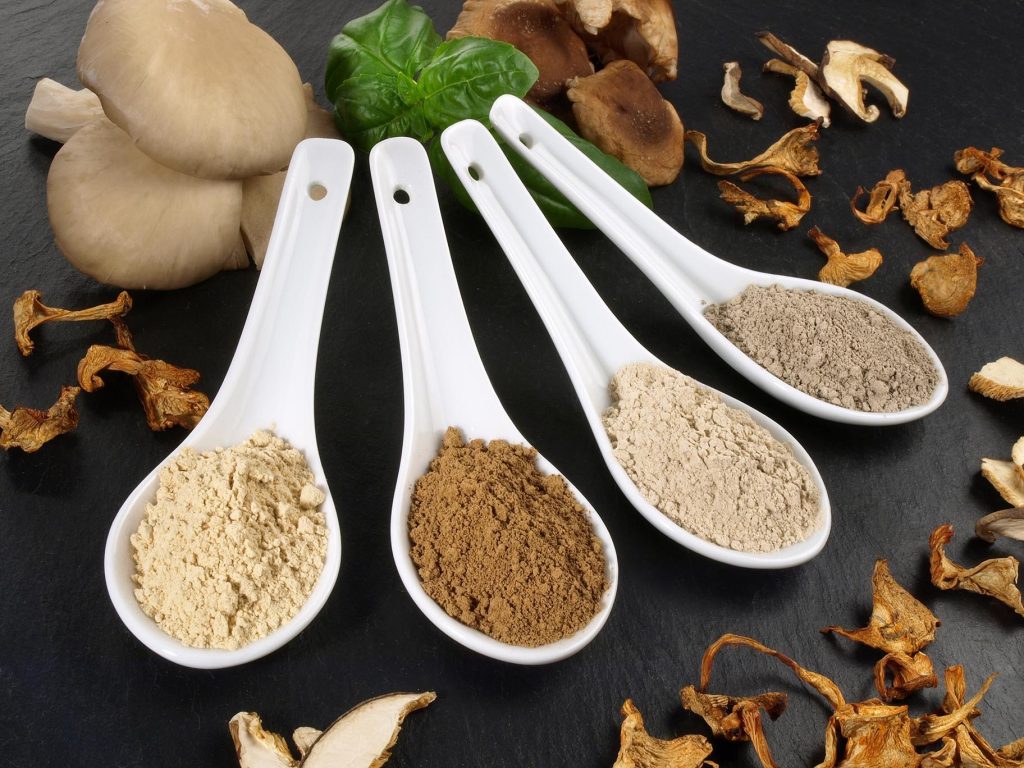
Another unique feature of functional mushrooms is that they are adaptogens.
Adaptogens increase the body’s resistance to biological and physical stress, promote normal bodily function during stress, and protect the body against stress-related harm. (14)
Functional mushrooms also contain other health-boosting elements, including triterpenoids, antioxidants, amino acids, polyphenols, peptides, flavonoids, and digestive enzymes.
Where and How Are Functional Mushrooms Grown
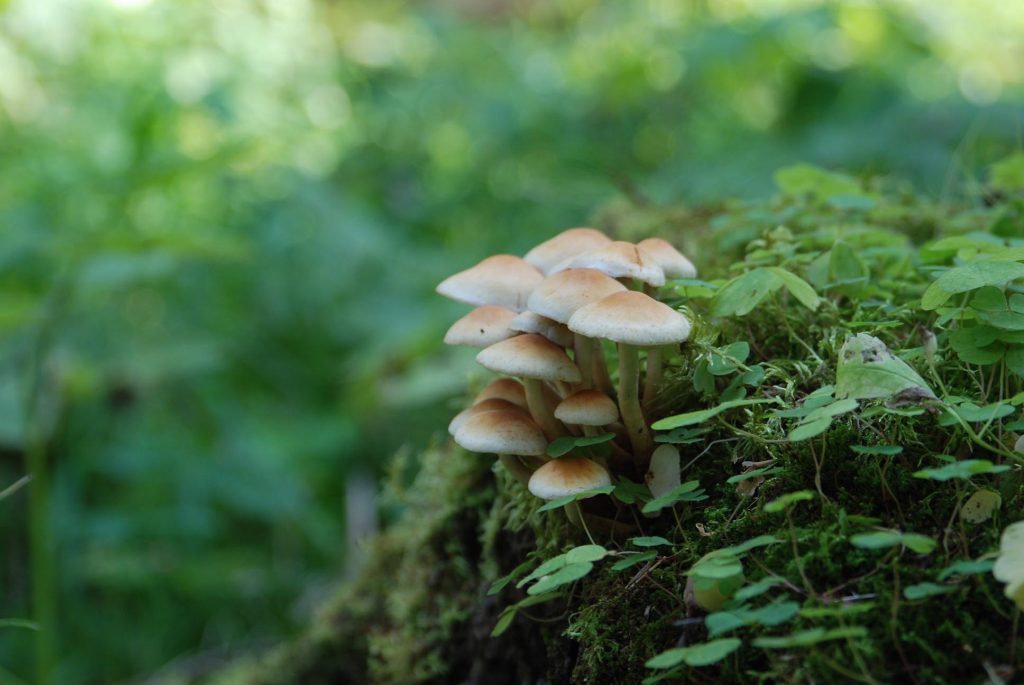
All mushrooms come from nature originally. Throughout the years, manufacturing techniques have been developed to produce mushrooms on a larger scale and in controlled environments.
Functional mushrooms are grown all around the world. Regardless of the geographic location in which they are grown, specific steps must be followed to produce the mushroom fruiting bodies. These controlled environments duplicate the natural and optimal mushroom species’ ideal temperature, growing medium, and humidity.
Functional mushrooms are grown on a substrate of aged oak or birch, grains, or hardwood chips and then are contained in plastic mushroom grow bags, depending on the variety.
It takes a few months for mushroom spawns to grow into mycelium roots. And it takes another few months to a year for the mycelium to sprout into shoots that eventually become full-grown mushroom fruiting bodies.

Stonehenge Health uses only 100% highly concentrated extracts of fruiting bodies in Dynamic Mushrooms. In contrast, some mushroom companies do not disclose that they are selling the mushroom roots grown on oats or rice called myceliated grain in their supplements. Myceliated grain contains a minimal amount of the actual mushroom, is high in starch, and is low in beta-glucans.
Stonehenge Health® mushrooms are globally sourced and third-party tested for heavy metals, toxins, and microbes manufactured in cGMP-certified facilities in the United States to ensure their identity, purity, and safety.
Supplementing with Functional Mushrooms
Rather than trying to find and eat all the mushrooms or taking each mushroom separately in a supplement, using a blend of various mushrooms is a convenient way to experience all the benefits that functional mushrooms offer.
Stonehenge Health’s Dynamic Mushrooms combines the five most studied and proven functional mushrooms – Lion’s Mane, Reishi, Chaga, Maitake, and Shiitake. Each one is considered adaptogenic; collectively, they help boost cognitive brain performance, relieve stress, reduce the adverse effects of stress on your body, and help you sleep better.
Individually, they offer their own unique benefits:
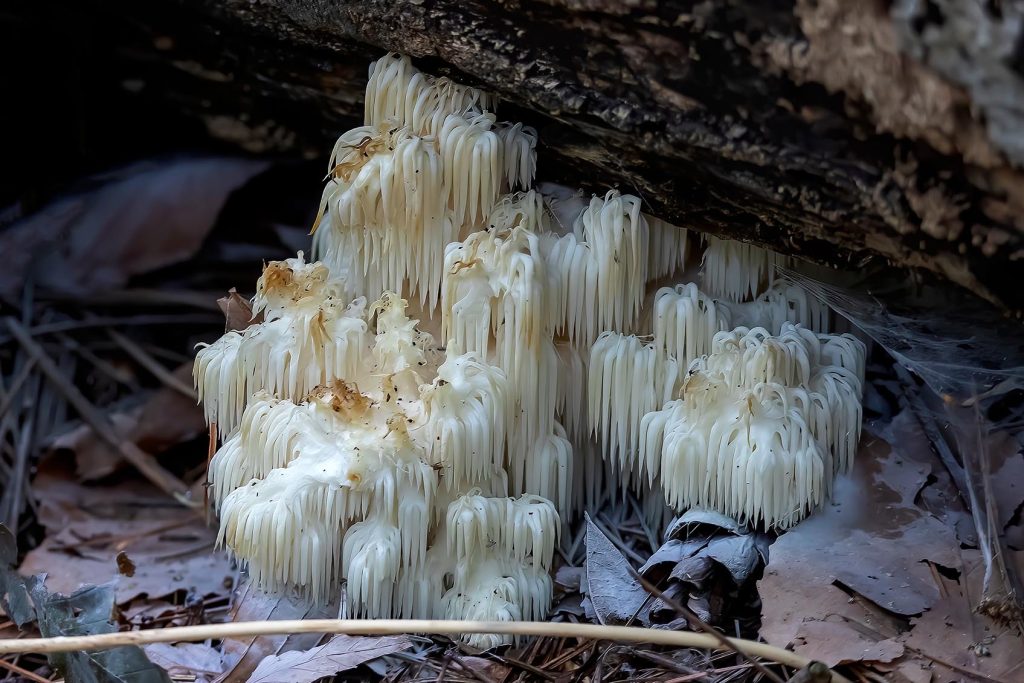
Lion’s Mane helps boost brain performance and improve mood. (15)
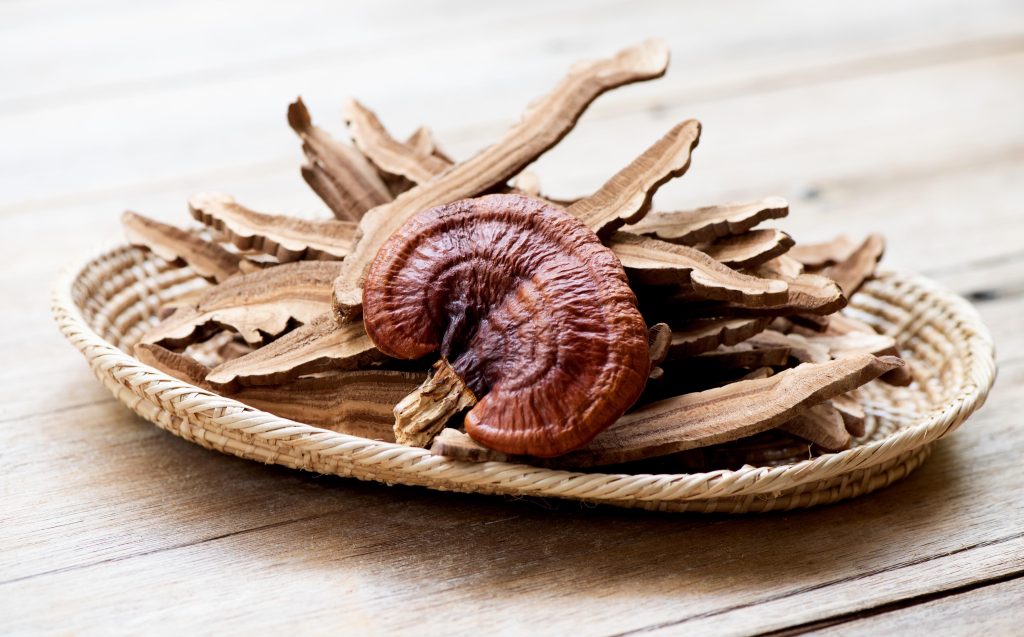
Reishi offers immune system support promoting the function of antibody cells and cell-mediated immunity. (16)
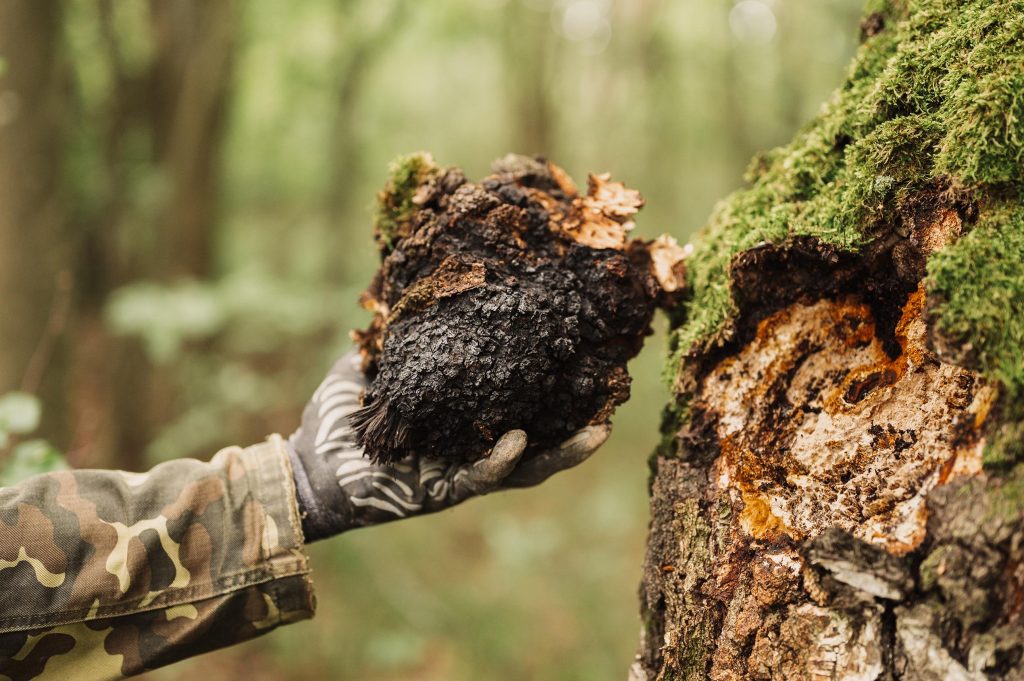
Chaga supports heart health by helping maintain blood sugar levels. (17)
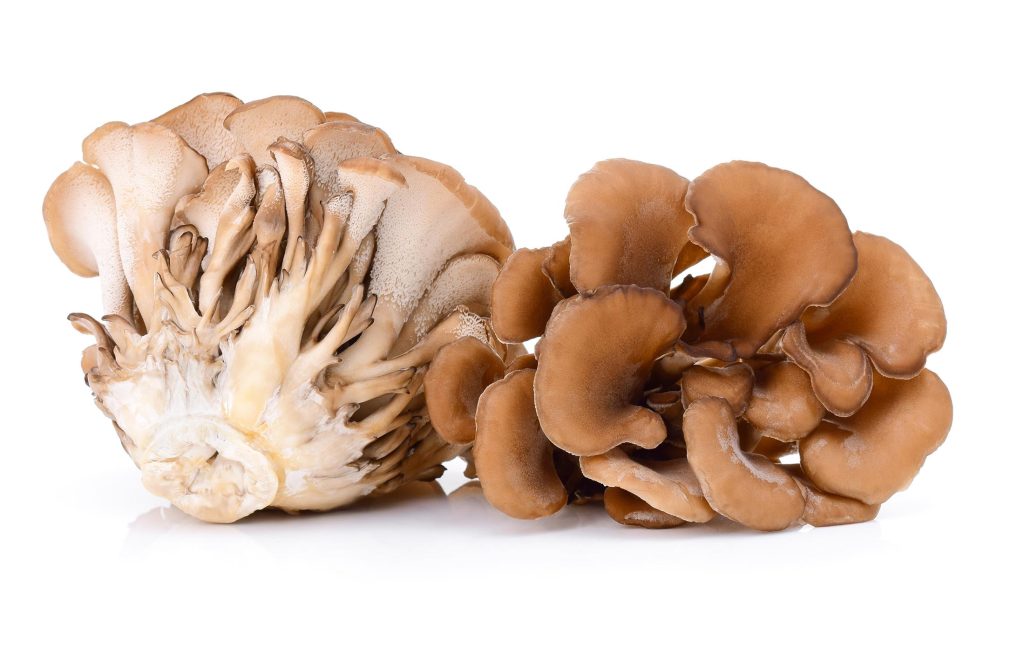
Maitake helps the immune system respond more rapidly and helps combat illness. (18)
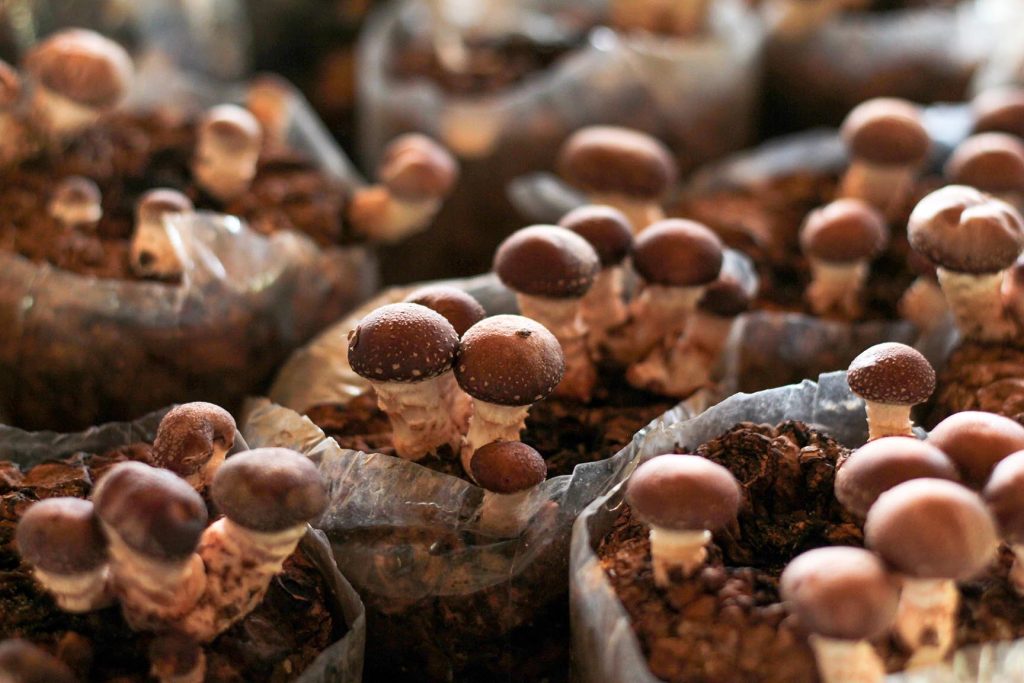
Shitake is known to help improve gut immunity and lower inflammation. (19)
Dynamic Mushrooms is an excellent supplement choice if you’re looking for an all-natural way to help support your cognitive brain health, immune system, cardiovascular system, and overall health. They may also help you better cope with stress and age-related health issues.
Sources:
1. Geng P, Siu KC, Wang Z, Wu JY. Antifatigue Functions and Mechanisms of Edible and Medicinal Mushrooms. Biomed Res Int. 2017;2017:9648496. doi: 10.1155/2017/9648496. Epub 2017 Aug 14. PMID: 28890898; PMCID: PMC5584359. | pubmed.ncbi.nlm.nih.gov/28890898/
2. Geng, Ping, Ka-Chai Siu, Zhaomei Wang, and Jian-Yong Wu. 2017. “Antifatigue Functions And Mechanisms Of Edible And Medicinal Mushrooms”. Biomed Research International 2017: 1-16. doi:10.1155/2017/9648496.
3. Mori, K. et al. (2011) “Effects of Hericium erinaceus on amyloid β(25-35) peptide-induced learning and memory deficits in mice”, Biomedical Research, 32(1), pp. 67-72. doi: 10.2220/biomedres.32.67. | pubmed.ncbi.nlm.nih.gov/21383512/
4. Ryu, S. et al. (2018) “Hericium erinaceus Extract Reduces Anxiety and Depressive Behaviors by Promoting Hippocampal Neurogenesis in the Adult Mouse Brain”, Journal of Medicinal Food, 21(2), pp. 174-180. doi: 10.1089/jmf.2017.4006. | pubmed.ncbi.nlm.nih.gov/29091526
5. D, Akramiene, Kondrotas A, Didziapetriene J, and Kevelaitis E. 2007. “Effects Of Beta-Glucans On The Immune System”. Medicina (Kaunas, Lithuania) 43 (8). | pubmed.ncbi.nlm.nih.gov/17895634/.
6. Ping Geng, Ka-Chai Siu, Zhaomei Wang, Jian-Yong Wu, “Antifatigue Functions and Mechanisms of Edible and Medicinal Mushrooms”, BioMed Research International, vol. 2017, Article ID 9648496, 16 pages, 2017. | doi.org/10.1155/2017/9648496
7. Lai PL, Naidu M, Sabaratnam V, Wong KH, David RP, Kuppusamy UR, Abdullah N, Malek SN. Neurotrophic properties of the Lion’s mane medicinal mushroom, Hericium erinaceus (Higher Basidiomycetes) from Malaysia. Int J Med Mushrooms. 2013;15(6):539-54. Doi: 10.1615/intjmedmushr.v15.i6.30. PMID: 24266378. | pubmed.ncbi.nlm.nih.gov/24266378/
8. De Silva, Dilani D., Sylvie Rapior, Kevin D. Hyde, and Ali H. Bahkali. 2012. “Medicinal Mushrooms In Prevention And Control Of Diabetes Mellitus”. Fungal Diversity 56 (1): 1-29. doi:10.1007/s13225-012-0187-4. | link.springer.com/article/10.1007/s13225-012-0187-4
9. Ryu, S. et al. (2018) “Hericium erinaceus Extract Reduces Anxiety and Depressive Behaviors by Promoting Hippocampal Neurogenesis in the Adult Mouse Brain”, Journal of Medicinal Food, 21(2), pp. 174-180. doi: 10.1089/jmf.2017.4006. | pubmed.ncbi.nlm.nih.gov/29091526
10. Cui XY, Cui SY, Zhang J, Wang ZJ, Yu B, Sheng ZF, Zhang XQ, Zhang YH. Extract of Ganoderma lucidum prolongs sleep time in rats. J Ethnopharmacol. 2012 Feb 15;139(3):796-800. doi: 10.1016/j.jep.2011.12.020. Epub 2011 Dec 21. PMID: 22207209. | pubmed.ncbi.nlm.nih.gov/22207209/
11. Jayachandran, Muthukumaran, Jianbo Xiao, and Baojun Xu. 2017. “A Critical Review On Health Promoting Benefits Of Edible Mushrooms Through Gut Microbiota”. International Journal Of Molecular Sciences 18 (9): 1934. doi:10.3390/ijms18091934. | ncbi.nlm.nih.gov/pmc/articles/PMC5618583/
12. Lai, Puei-Lene, Murali Naidu, Vikineswary Sabaratnam, Kah-Hui Wong, Rosie Pamela David, Umah Rani Kuppusamy, Noorlidah Abdullah, and Sri Nurestri A. Malek. 2013. “Neurotrophic Properties Of The Lion’s Mane Medicinal Mushroom, Hericium Erinaceus (Higher Basidiomycetes) From Malaysia”. International Journal Of Medicinal Mushrooms 15 (6): 539-554. doi:10.1615/intjmedmushr.v15.i6.30. | pubmed.ncbi.nlm.nih.gov/24266378/
13. Dai, Xiaoshuang, Joy M. Stanilka, Cheryl A. Rowe, Elizabethe A. Esteves, Carmelo Nieves, Samuel J. Spaiser, Mary C. Christman, Bobbi Langkamp-Henken, and Susan S. Percival. 2015. “Consuming Lentinula Edodes (Shiitake) Mushrooms Daily Improves Human Immunity: A Randomized Dietary Intervention In Healthy Young Adults”. Journal Of The American College Of Nutrition 34 (6): 478-487. doi:10.1080/07315724.2014.950391. | pubmed.ncbi.nlm.nih.gov/25866155/
14. Panossian, Alexander, and Georg Wikman. 2010. “Effects Of Adaptogens On The Central Nervous System And The Molecular Mechanisms Associated With Their Stress—Protective Activity”. Pharmaceuticals 3 (1): 188-224. doi:10.3390/ph3010188. | mdpi.com/1424-8247/3/1/188
15. Mori, Koichiro, Yutaro Obara, Mitsuru Hirota, Yoshihito Azumi, Satomi Kinugasa, Satoshi Inatomi, and Norimichi Nakahata. 2008. “Nerve Growth Factor-Inducing Activity Of Hericium Erinaceus In 1321N1 Human Astrocytoma Cells”. Biological & Pharmaceutical Bulletin 31 (9): 1727-1732. doi:10.1248/bpb.31.1727. | pubmed.ncbi.nlm.nih.gov/18758067/
16. “Immunomodulatory effects of Hericium erinaceus derived polysaccharides are mediated by intestinal immunology”, Food & Function, 8(3), pp. 1020-1027. doi: 10.1039/c7fo00071e. | pubmed.ncbi.nlm.nih.gov/28266682/
17. Yang, Mo, Dong Hu, Zhengying Cui, Hongxuan Li, Chaoxin Man, and Yujun Jiang. 2021. “Lipid-Lowering Effects Of Inonotus Obliquus Polysaccharide In Vivo And In Vitro”. Foods 10 (12): 3085. doi:10.3390/foods10123085. | mdpi.com/2304-8158/10/12/3085/htm
18. Vaclav Vetvicka, Jana Vetvickova. 2014. “Immune-Enhancing Effects Of Maitake (Grifola Frondosa) And Shiitake (Lentinula Edodes) Extracts”. Annals Of Translational Medicine 2 (2). | ncbi.nlm.nih.gov/pmc/articles/P
19. “ConsumingLentinula edodes (Shiitake) Mushrooms Daily Improves Human Immunity: A Randomized Dietary Intervention in Healthy Young Adults”, Journal of the American College of Nutrition, 34(6), pp. 478-487. doi: 10.1080/07315724.2014.950391. | tandfonline.com/doi/abs/10.1080/07315724.2014.950391?journalCode=uacn20















